Habit of a lifetime: Why are increasing numbers of women in Britain becoming Catholic nuns?
The number of women taking holy vows has trebled in five years
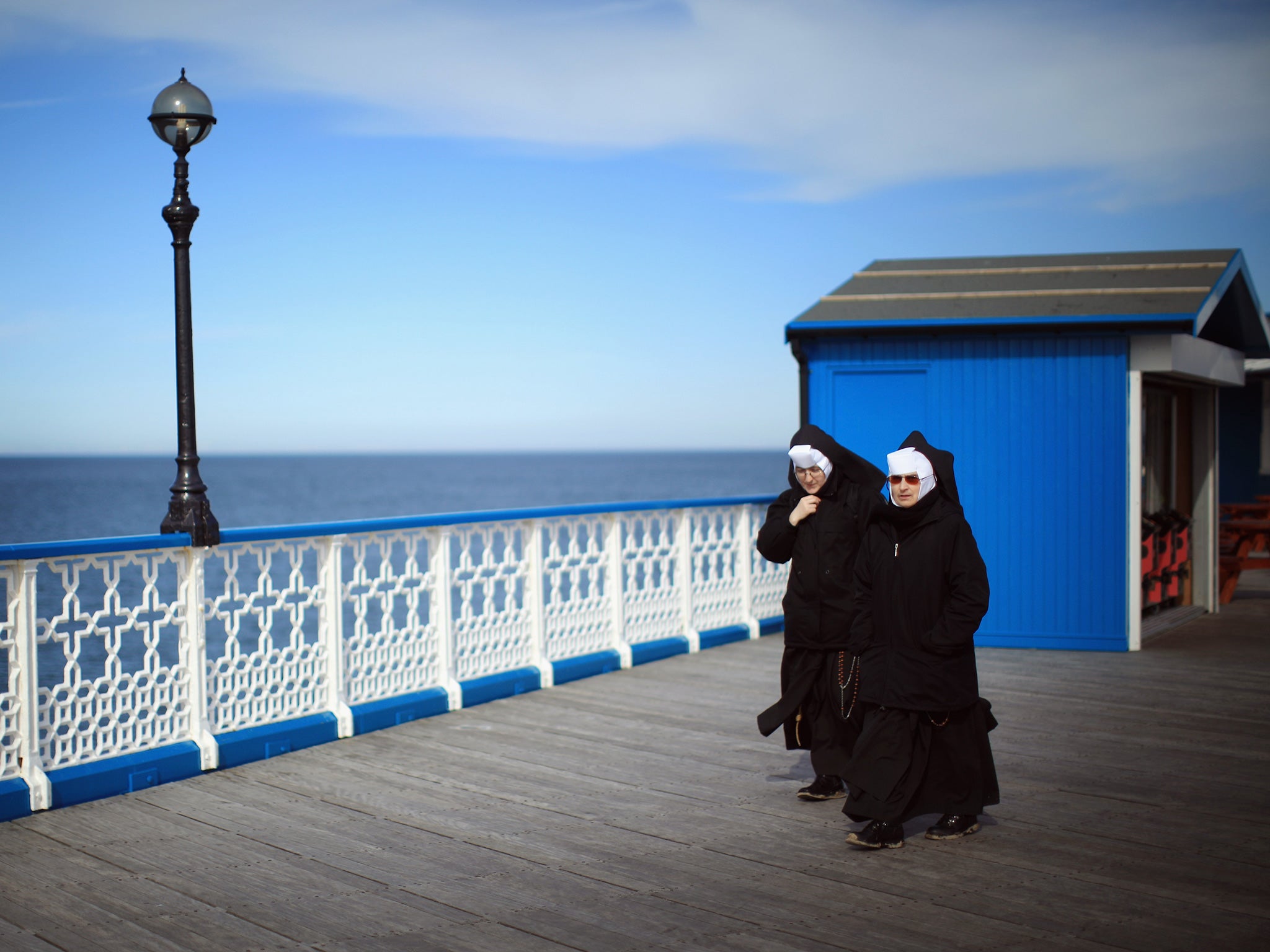
Your support helps us to tell the story
From reproductive rights to climate change to Big Tech, The Independent is on the ground when the story is developing. Whether it's investigating the financials of Elon Musk's pro-Trump PAC or producing our latest documentary, 'The A Word', which shines a light on the American women fighting for reproductive rights, we know how important it is to parse out the facts from the messaging.
At such a critical moment in US history, we need reporters on the ground. Your donation allows us to keep sending journalists to speak to both sides of the story.
The Independent is trusted by Americans across the entire political spectrum. And unlike many other quality news outlets, we choose not to lock Americans out of our reporting and analysis with paywalls. We believe quality journalism should be available to everyone, paid for by those who can afford it.
Your support makes all the difference.Dawn breaks grey and misty over the New Forest. It’s 6.30am and I’m in a modern, high-ceilinged chapel with tall windows and white-washed walls. Ten nuns are dotted around me in the pews, clad in white habits, hands clasped, faces turned towards the altar, deep in reverent thought. It’s how they begin every day: with half an hour of contemplative quiet followed by prayer. It takes me some minutes to get used to the resounding silence but I eventually sink into thought – mostly, contemplating my upcoming breakfast.
As morning rituals go, pre-breakfast dawn devotion is very different from my typically rushed routine, but I’m on a mission. For two days, I am joining the Dominican Sisters of St Joseph, a Roman Catholic group of 11 nuns living deep in Hampshire’s bucolic folds.
I’m here because recent figures released by the Catholic Church say we’ve hit a 25-year high for women opting to become nuns. In the past five years, the number of women taking holy vows has trebled, from 15 in 2009 to 45 in 2014. A decade ago that figure was seven. The numbers, though incremental – and a long way off the 80-or-so women a year in the 1980s who joined religious orders – are significant. If a decade ago we thought this antiquated way of life was dying out in this country, it’s a different story now.
Commentators and experts have attributed the gradual shift to a number of things. The Catholic Church has made a concerted PR push to demystify religious life, after decades of damaging press over issues such as attitudes to homosexuality, artificial birth control, abortion and the ordination of women, not to mention sex-abuse scandals surrounding priests. As a result, rather than hiding behind cloistered walls, religious communities are opening their doors and letting young people see for themselves what the life entails.
Cathy Jones, a Catholic religious-life promoter for the National Office for Vocation, has noticed a marked change.
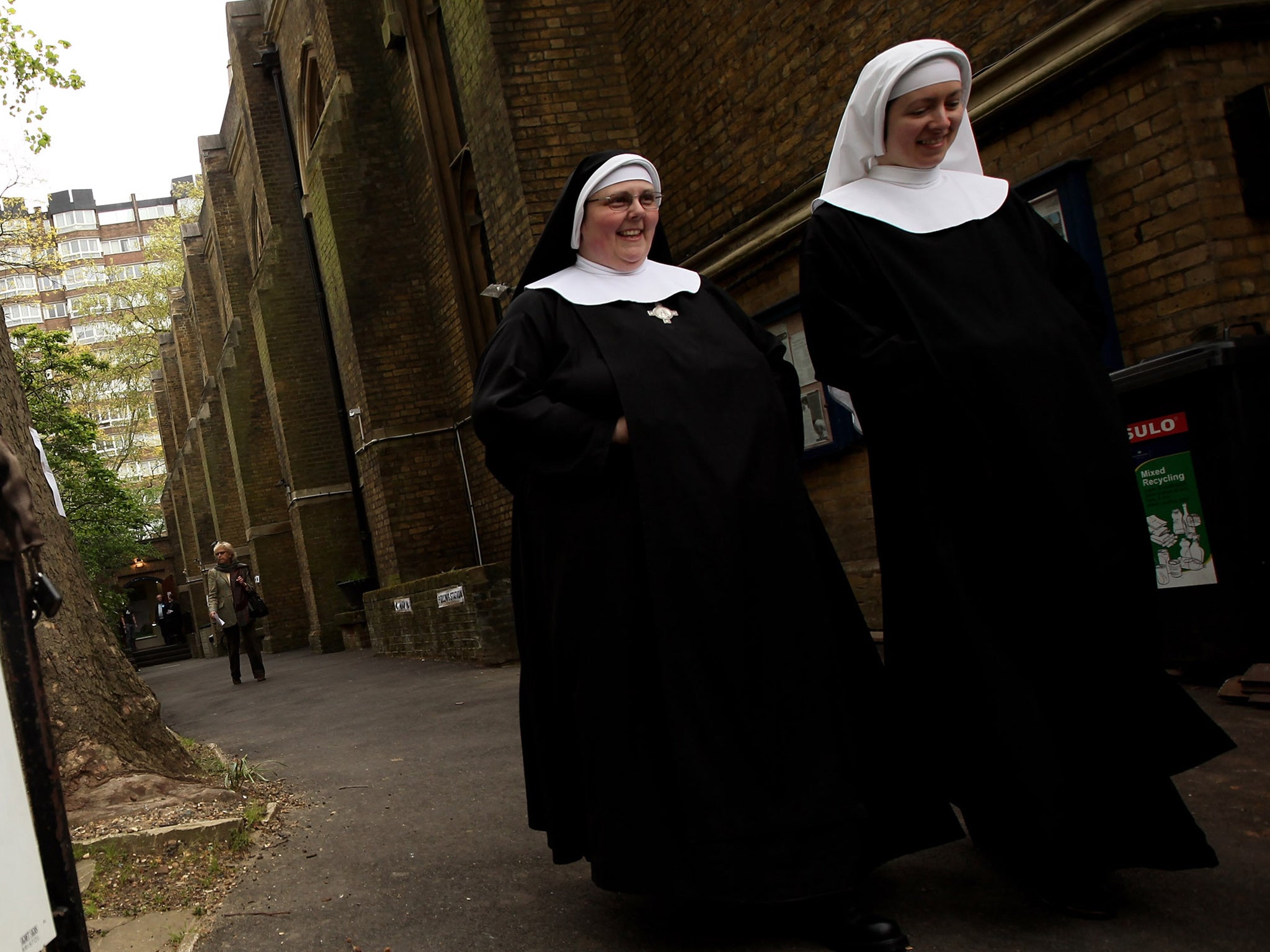
“In the last three or four years, convents have begun taster weekends that are about experiencing their way of life, but less about recruitment. There are open days – something that 15 years ago was unheard of – and youth festivals. All these things help.” Young people are responding and 15 of those joining convents last year were under 30.
Other vocation experts say that women are being drawn to convents because of “a gap in the market for meaning in our culture” – in today’s hyper-sexualised, materialistic, and technology-dependent society, you can see how a simple, closed-off life of thought, study and prayer might appeal to some.
Karen Armstrong, a religious scholar and former nun, agrees.
“A religious quest usually begins with the perception that something is wrong. As people retreat into virtual worlds, some feel a lack of community values, and the close-knit communal life in a monastery or convent can seem very attractive. In quite another context, forensic psychiatrists have found young people who join extremist groups are driven less by Islamic ideology [which opposes such violence] than by a sense of futility and, in some parts of the Muslim world, hopelessness.”
Pope Benedict XVI’s 2010 visit – the second time a reigning Pope had visited this country – also helped fan the vocation flame, as Catholics rushed to reclaim their identity. And nuns are playing more visual, active roles in schools, healthcare and even with the police, caring for trafficked women rescued from brothels. It’s also possible that TV shows such as Call the Midwife and the US series The Sisterhood: Becoming Nuns (a reality show following young women as they consider joining a convent) have softened our views on piety, as has a string of high-profile conversions. Last year, Martina Purdy, a BBC political reporter, gave up a 25-year career to join a convent of nuns called the Adoration Sisters, and, prior to that, David Cameron’s former girlfriend, Laura Adshead, made headlines when she took up the habit.
Martina said of her vocation at the time: “It was a surprise for me and I am very happy. I hope many more will follow us.” You might be in luck, Martina.
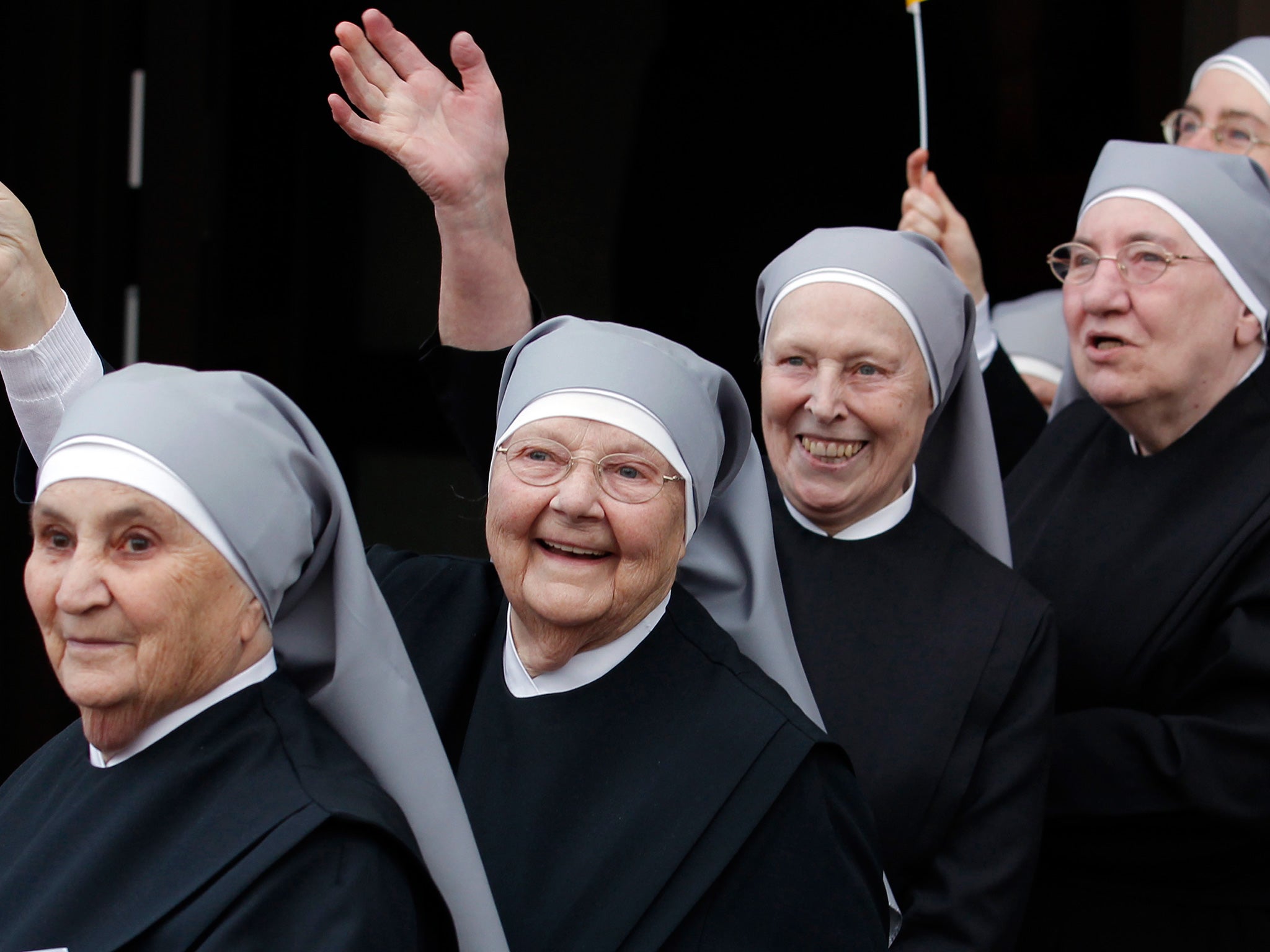
Interestingly, the Church of England tells a slightly different story. The number of women signing up to become Anglican nuns fell from 504 in 2002 to 310 in 2012 but, according to a Church of England spokesperson, it’s not all doom and gloom: “We’ve seen a shift in the way people are taking up religious orders. While they might not be taking vows, they are signing up to new communities that don’t sign up for life, but still maintain some form of religious order.” Called oblates, tertiaries, associates and “outer” Brothers and Sisters, these “part-time” nuns have grown year-on-year by 2,000 in the past four years to 5,300.
Despite choosing a life that seems at odds with modernity, Sister Cathy Jones says that women entering a Catholic religious life have had the world at their feet before entering the convent.
“The vast majority are graduates from prestigious universities with opportunities ahead of them, or those in their late twenties or thirties who discover that a career is not enough.”
Sister Mary Grace, 26, joined the Dominican Sister of St Joseph two years ago. She studied English literature at Texas A&M University and wrote for the student paper. Despite envisaging a career in charity she kept coming back to God and heard about the convent through a friend who had visited on retreat.
“I didn’t really have a voice from Heaven. I just kept coming back. You are never going to know that it is absolutely right straight away. You have to test it.”
Another, Sister Mary Catherine, a bubbly, dark-haired 32-year-old who has been at the convent for five years, is keen to make one point clear.
“People have preconceptions of nuns. They think we’re afraid of marriage, prudish, that we want the security of living in an all girls’ club or are having financial struggles. It’s always that we are escaping from something. But it’s quite the opposite. It’s a privilege to be picked by Him for this life. It is God who calls us.”
Ranging in age from 26 to 80, the sisters form a relatively new order, established in 1998. They are “apostolic”, which means dedicated to active preaching and teaching outside the priory, as well as to prayer and worship.
All live in an enclosed (off-limits to anyone who hasn’t taken holy vows) part of a late-Victorian mansion surrounded by fields and forest. During my stay I see a Disney-worthy assortment of deer, rabbits, woodpeckers and wild horses. It feels pretty idyllic.
There’s a newly-built cavernous chapel 30 paces from their door and each sister has a bedroom or “cell” which contains only a bed, chair, wardrobe, sink and desk. On my arrival, I’m shown to a simple guest room, usually reserved for retreats, confirmation groups or anyone who would like to dip their toe in ecclesiastical life before taking vows.
The sisters’ routine is as unwavering as their devotion. After Morning Prayer, breakfast is taken in silence (cereal, toast, tea and fruit) before two hours of private study in their cells. Noon marks Midday Prayers and Mass and lunch is at 1pm (chicken goujons or fish pie with chips and peas), when they discuss the news gleaned through a daily paper and the Catholic Herald. In the afternoons they pray, study or visit schools. Evening Prayer is before supper, usually eaten in silence, although one nun may do a reading (decided by rota); 6.45pm to 8.15pm is free for washing, habit ironing, gooseberry-jam making and, sometimes, watching Poirot or playing charades. There are leeks to be tended in the vegetable patch and the weekly Tesco Direct shop to order. They return to chapel for Adoration and Compline at 8.15pm, after which, the nuns don’t speak unless absolutely necessary and bed is an early affair.
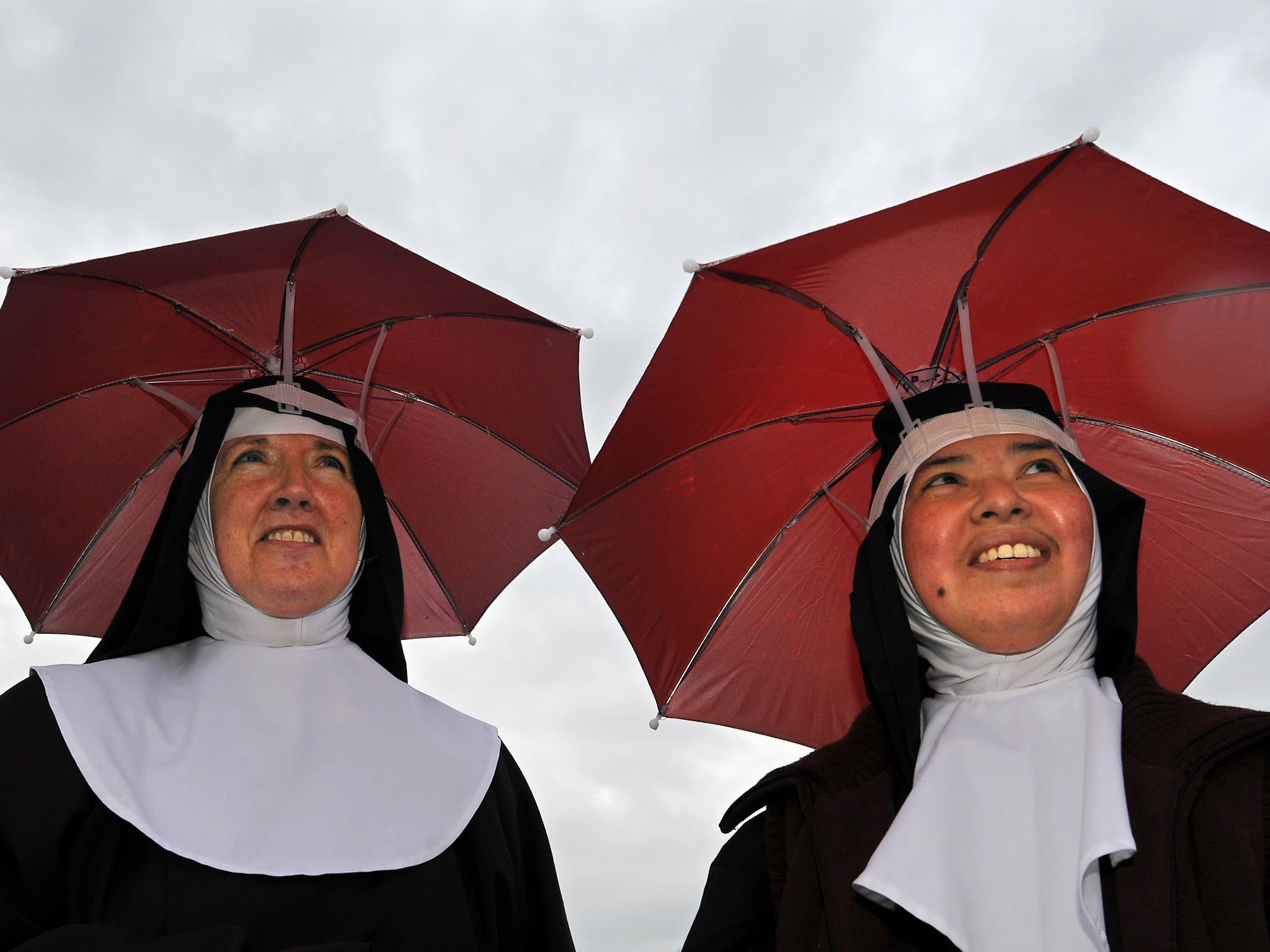
If I was expecting a shy, retiring group of women, outside of prayer times, the nuns are anything but. They laugh and joke at everything: the weather, their outfits, the food, the fact that they actually ask themselves “what would Jesus do?”. Last year, they performed Sister Act during an open day. They’ve travelled widely to Dubai, Jersey, America, Oman and Lithuania and yes, they voted in the election. During my stay, there was discussion about the local Conservative and Liberal Democrat candidates, but it looked likely that the Lib Dem would lose out because he was yet to reply to emails from the nuns questioning his stance on a number of issues.
“It’s important for us to have a say,” says Sister Veronica, 60, a no-nonsense former primary school teacher from London, who joined the convent 16 years ago after years spent caring for her elderly parents. “We are pro-life and have views on justice, family support, education and immigration. None of the candidates agrees with us on everything, so it’s a case of picking the lesser of two evils.”
Sister Mary Catherine is behind the convent’s surprisingly buoyant social-media presence. Before I arrive, she emails me with an emoji of a face wearing sunglasses to tell me she is looking forward to my stay. She’s put the Dominican Sisters of St Joseph on Instagram, Twitter and Facebook and uploads posts with hashtags such as #conventlife and #creationisbeautiful. She came around to God’s calling “little by little”, but decided at 23 that she was Catholic after reading the Catechism and finding that it appealed to her reason. She’d been raised an evangelical Protestant in Kentucky, but her parents separated when she was young and she grew angry and restless. A conversation with a priest sowed the seed for what would become her vocation, a path she felt compelled to follow when she realised that nothing in life could ever compare to her love of God. She heard about the Dominican sisters in Hampshire after someone posted about them on a Christian forum, and was drawn to their mix of preaching and prayer.
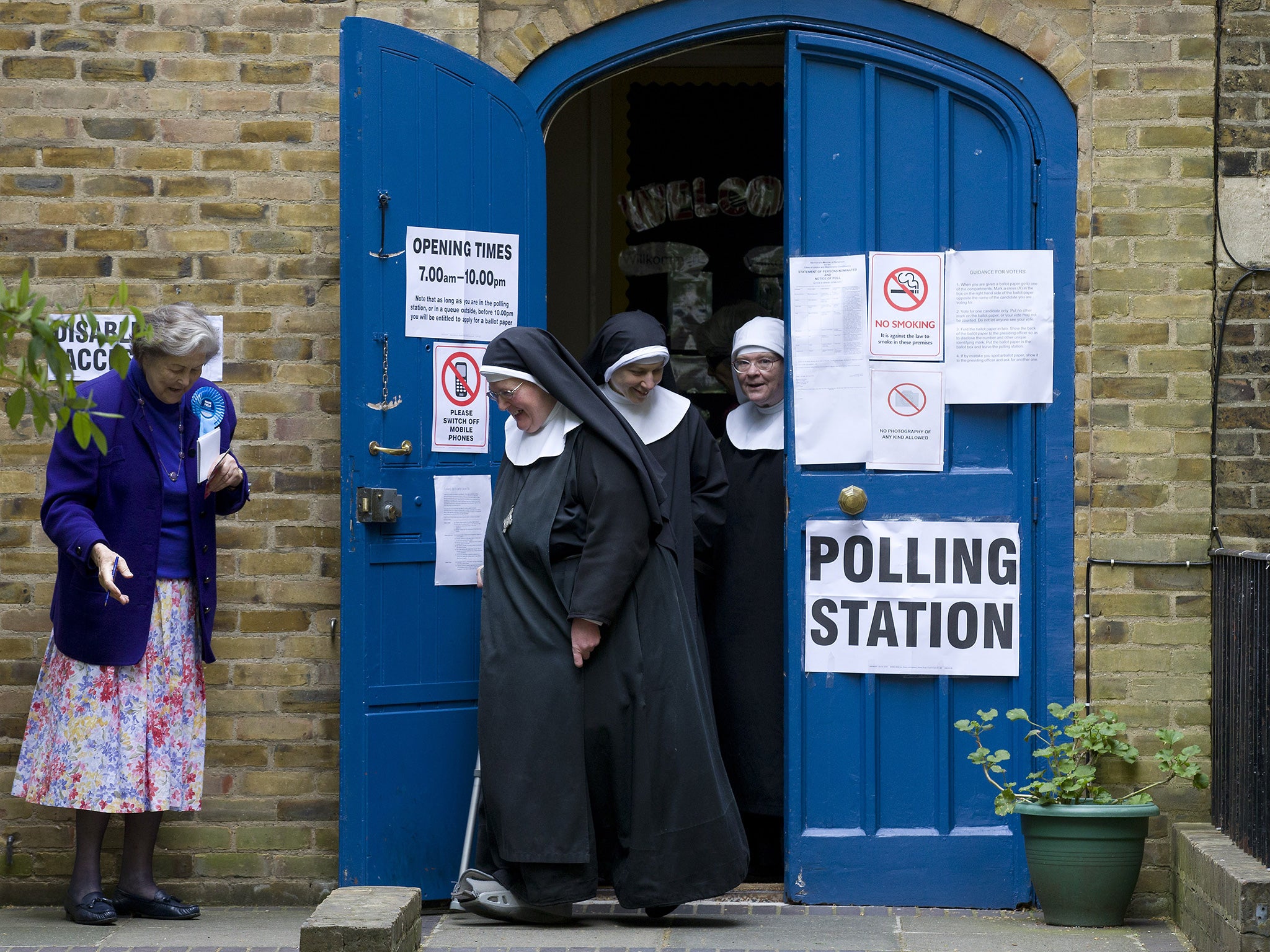
As she has poor sight, Sister Mary Catherine uses an iPad to follow orders of service, and the Pope App for news from the Vatican.
“I never imagined I’d be allowed this, but the sisters are so considerate and recognise its use is for evangelisation.” She remains pragmatic about her vow of poverty.
‘“I have to wear ugly shoes for the rest of my life but it has made me rethink what’s important. I don’t need 20 pairs of shoes. Now I have just three: an everyday pair, a waterproof pair and sandals. It’s liberating; you get such peace from rejecting material things.” What about family, surely she misses them?
“I write or speak to them once a month, but part of formation is not seeing your family. You’re not saying they come second, but you have to work on your relationship with God.”
Vocation (which comes from Latin meaning “a call” or “summons” and is the process by which a women becomes a nun), unsurprisingly, is not a short process. In most monastic communities there are three stages – postulate, novitiate and temporary profession – spread over six years before final vows are made. For the moment, this convent has hit capacity, until some old stables are converted.
The bell outside sounds for Adoration and I join the nuns once more in silent reflection, an alien but increasingly enjoyable activity. If I leave with anything from my time here, it’s what Sister Mary Catherine said to me moments before. “There’s no room for silence in modern lives.’ Amen, sister.
How to become a nun
The first phase is intended to test whether you have the aptitude for religious life. This stage is termed an aspirancy, a period of discernment lasting two to four weeks, in which the aspirant participates in the prayer and common life of the community to work out whether the vocation is for them.
If the nuns in her chosen order decide that she fits the bill, she will then be accepted into a postulancy, that is, a probationary admission into the religious order. Upon receiving her letter of acceptance into a postulancy, she must dispose of all her worldly goods, and prepare to leave everything and follow Christ.
This stage lasts roughly one year. During this time, the postulant lives in the novitiate and participates in the novitiate schedule, taking classes in sacred scripture, liturgy and Church history.
Having completed this level, she then enters the novitiate, a benchmark reached when the postulant receives the habit and her new religious name. This is a two-year phase in which nuns are expected to deepen their relationship with Christ and reflect on the grace and responsibility of the role.
At the end of the two-year novitiate, the nun takes her first vows, “the temporary profession of vows”. Three years later, she takes her final vows: the last phase of formation, a celebration in which, as a vowed member, she freely gives herself to God as a professed nun.
Sophie Dimitriadis
Join our commenting forum
Join thought-provoking conversations, follow other Independent readers and see their replies
Comments